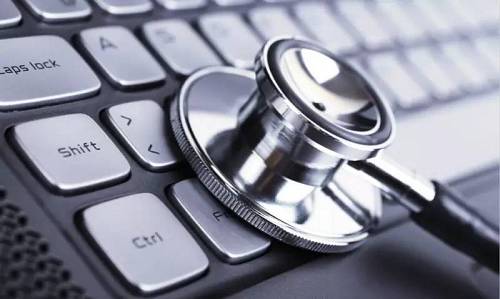How to share more medical data with more stakeholders to achieve more goals; at the same time ensure data integrity and protect patient privacy, which is very annoying for all kinds of health care systems in the world. The problem. The traditional model is difficult to solve, but with the decentralized and non-tamperable management of the blockchain, the processing efficiency of the medical business may reach a new level, and will even bring revolutionary changes to the medical industry . The blockchain was originally in the eyes of everyone because of the rise of Bitcoin, but now it has become a cutting-edge technology that can influence the development of Bitcoin. At present, the blockchain has penetrated into many industry sectors. At present, the most mainstream financial market naturally does not need to say much. Many people think that the medical and health field will be the second largest application market of the blockchain after finance. First, the traditional medical business model Traditionally, organizations share and manipulate medical data with each other, generally following three modes: push, pull, and view. These three modes have their own advantages and disadvantages. The blockchain provides a fourth model that has the ability to securely share medical data. The payload of medical information is sent from one institution to another. This model is called “push.†For example, in the United States, there is a secure email standard called Direct for senders (for example, emergency room). The physician) and the recipient (eg, your health care provider) provide encrypted transmissions. However, this mode has a problem. The push mode is only applicable to the transmission mode of the two parties involved, and cannot have any third party. From the moment the data is generated, to the moment the data is used, there is no way to guarantee the integrity of the data. Since the push mode is assumed at the outset, the transmitting system is capable of generating an accurate payload. The receiving system is able to accurately ingest this payload without any standardized audit trails. A health care organization can ask another institution for information. This model is called “pull.†For example, a cardiologist can get information from your health care practitioner. In pull mode, all consents and permissions are informal and temporary, and there is no standardized audit trail here. One institution can access the data in another agency's file. This model is called “view.†For example, a surgeon can view your previous X-rays in the operating room. The security system for this model is temporary and there is no standardized audit trail. Moreover, it may not be based on a "patient-institution" relationship. All of these modes are technically feasible. But the policies surrounding them are subject to institutional changes, regional practices, and strict implementation of privacy policies across the country, making it difficult to truly solve the problem. Second, the fourth mode based on blockchain A blockchain is a completely different structure. Providing universally applicable encryption tools ensures data integrity and standardized auditing, formalizing the "contract" for data access. The blockchain was originally conceived as a book for financial transactions, and each financial institution created an encrypted list of all deposit and withdrawal records. The blockchain uses public key cryptography to create a content chain that can only be added, eternal, and time-stamped. A copy of the blockchain is distributed to each participating node in the network. Following the idea of ​​blockchain, every Electronic Health Archive (EHR) updates information about drugs, problems, and allergies to a trustworthy, open source, account that covers the entire community. In this way, each organization can have a clearer understanding of the contents of the medical file increase and decrease, and can conduct audits. EHR not only displays data in a single database, it can display data in every database that is trusted by the accounts. The end result is that your information can be perfectly coordinated throughout the system, from the moment the data is generated to the moment the data is called, the integrity of the data is guaranteed and there is no human intervention. The cellulose content in corn is very high, which has the characteristics of stimulating gastrointestinal motility and accelerating fecal excretion, and can prevent constipation, enteritis, intestinal cancer, etc.; vitamin E contained in corn can promote cell division, delay aging, reduce serum cholesterol, The function of preventing skin lesions, but also reducing arteriosclerosis and brain function decline. Fruit Sweet Corn Kernels,Ready Sweet Corn,Fresh Corn Cob,Yellow Sweet Corn Yomifresh , https://www.yomifresh.com
Blockchain can transform the privacy protection and data sharing model of the medical industry
